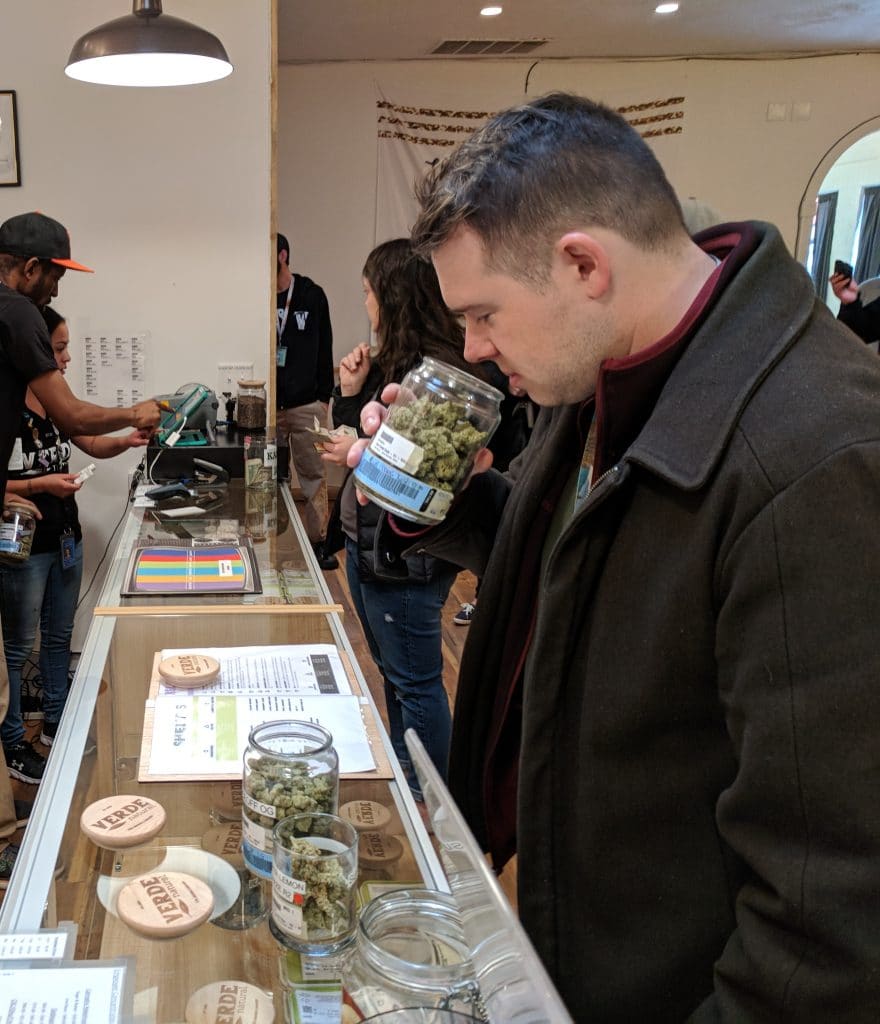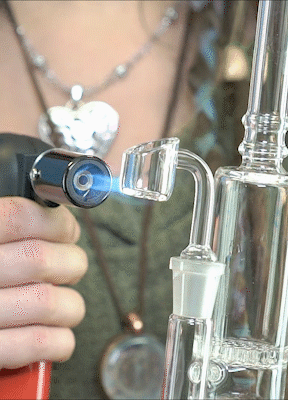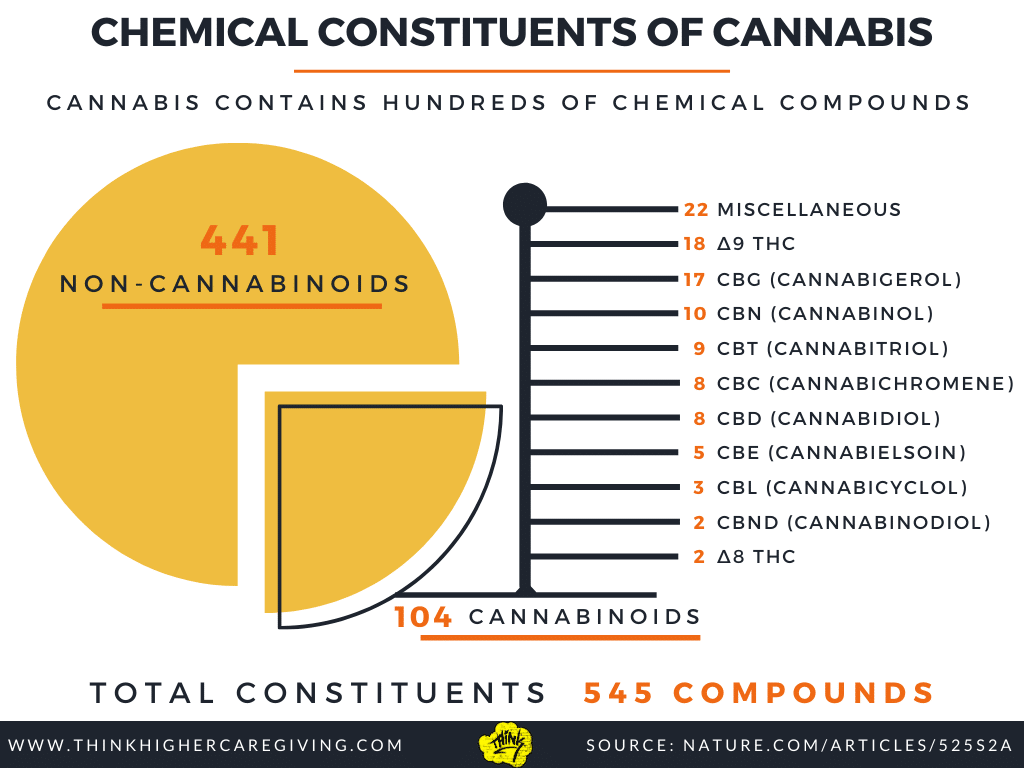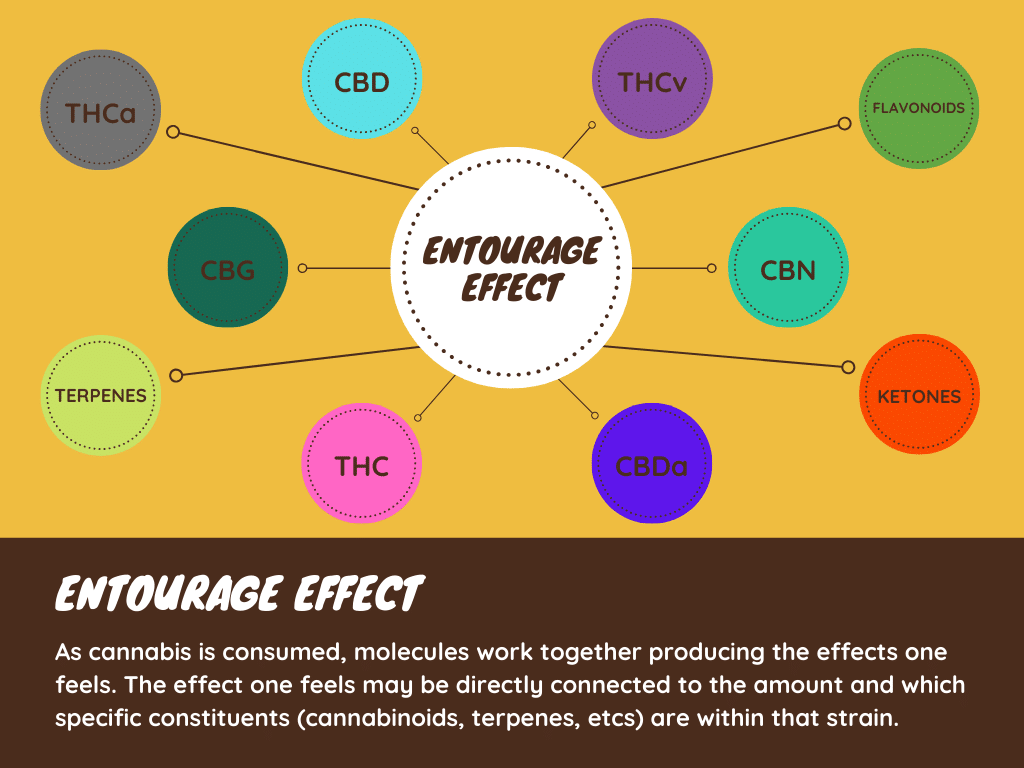Why Are Terpenes So Hot Right Now?
CBD Benefits: Expectations vs. Reality
April 15, 2020Delta 8 THC: Getting To Know It And Other Minor Cannabinoids
October 13, 2020Many individuals that have consumed cannabis multiple times can easily notice the wide variety of flavorful musty smells cannabis produces.

But how and why does cannabis smell the way it does? Why do some cannabis strains smell different? And why do different kinds of cannabis strains produce different effects?
As it turns out, there are specific molecules that are responsible for these nose tickling smells and the wide-ranging effects of cannabis. These molecules are referred to as Terpenes.

What are terpenes?
What gives roses their smell? What gives mangos their smell? What gives cannabis its distinctive smell? Well, the answer is Terpenes!
Terpenes are a large and diverse class of organic hydrocarbons, which have a strong odor. Terps are formed by the union of hydrocarbons that contains 5 carbon atoms, known as an isoprene.
Terpene Science
Isoprene’s bind together forming larger molecule chains. When these isoprene’s bind together they can be classified based on the number of isoprene molecules within their chain.

When two isoprene’s are biosynthesized and are unionized, they produce the smallest and most volatile form of terpene, a monoterpene.
Monoterpenes are readily oxidized, meaning they react to air and heat sources at higher rates than different isoprene chains.
Some forms of terpenes which fall within the monoterpene classification that are also common within cannabis are myrcene, pinene, limonene, and many more.
When three or more isoprene molecules are biosynthesized together, they form larger and lesser volatile terpenes, such as a sesquiterpenes terpene. Sesquiterpenes are more bitter and less inclined to being oxidized.
Where are terpenes found besides cannabis?
Produced by plants and some insects, terpenes help deter herbivores and attacking parasites and predators. Additionally, terpenes help protect plants against high temperatures.

Within plants, terpenes are considered secondary metabolites, which provide the plant their specific aroma, flavor.
Terpenes are sometimes used interchangeably with terpenoids. It is important to note that this is not correct.
TERPENES VS TERPENOIDS
Terpenoids are modified terpenes which contain additional functional groups, normally containing oxygen.
During the flower curing and drying process of cannabis flower, terpenes denature by oxygen overtime producing terpenoids. Think of terpenoids as cured terpenes.
Where are terpenes produced in plants?
As mentioned above, terpenes can be found in almost all plants and some insects. But where? Most terpenes are formed within the glands of the plant’s leaves and flowers.
 Within cannabis, terpenes and cannabinoids share their biosynthetic pathways. Both cannabinoids and terpenes are biosynthesized in the glandular trichomes of cannabis leaves and cannabis flowers, more specifically the exuded resin.
Within cannabis, terpenes and cannabinoids share their biosynthetic pathways. Both cannabinoids and terpenes are biosynthesized in the glandular trichomes of cannabis leaves and cannabis flowers, more specifically the exuded resin.
Cannabis mainly forms a higher proportion of monoterpenes and a variable of sesquiterpene. However, due to how volatile monoterpenes can be, these terpenes normally are the first to evaporate during the plant drying process.
These evaporating monoterpenes are the main responsible factor in the transformation of the fresh plant aroma when the plant is first cut to a well-dried, fresh citric, fruity, aroma that one is acquainted too.
The change in taste comes also from the degradation of chlorophylls.
Terpenes, in general, have a much lower vaporization point when compared to cannabinoids. This can be noticed very clearly when dabbing concentrates.
Taking “hot and heavy” dabs actually causes the terpenes to become “burnt”, transforming their structure, almost like denaturing the molecule. This causes the user an unpleasant taste when compared to taking “low temp dabs”.
Low-temperature dabs will minimize the scorching of these terpenes, therefore producing a more flavorful, and enjoyable dab. Learn more amount low-temp and hot & heavy dabs in our How To Dab Article!
Distillation techniques used in extracting terpenes can determine the ratio of monoterpenes to sesquiterpene terpenes.
For example, with a non-polar butane extraction, although these monoterpenes have a higher evaporating rate, remember they are produced in higher proportions. Therefore, final test results will still show higher amounts of monoterpenes than sesquiterpene.
How Do Terpenes Affect Us?
Research on terpenes and essential oils within major industries such as big pharma, perfumes, fragrances, and the food industry, has proven that terpenes can have important biological and therapeutic effects.
The FDA and other alike agencies generally recognized terpenes as “safe”. Terpenes act on neurotransmitters and receptors. Additionally, terpenes share a precursor with phytocannabinoids.
Terpenes have an interesting structure and function relationship. Terpenes have one more hidden specialty, and that is the theory described as “the entourage effect”.
Background of The Entourage Effect
Cannabis is known for its capabilities affecting behavior, mind, and emotions.
There have been over 545 constituents that have been identified in cannabis. These constituents consist of molecules such as specific cannabinoids, specific terpenes, specific flavonoids, and more!

As cannabis is consumed, these molecules work together producing the effects one feels. The effect one feels may be directly connected to the amount and which specific constituents are within that strain.
The entourage effect is to describe how these molecules will produce a more beneficial or greater effect than if they were working separately.
What is the Entourage Effect Theory?
The entourage effect was first discussed in 1998 by renown cannabis scientist, Dr. Raphael Mechoulam, but it wasn’t until later that year when Dr. Ethan Russo, put out “Cannabis and Cannabis Extracts”
In the paper, Dr. Russo goes on to describe how there is “good evidence shows that secondary compounds in cannabis may enhance the beneficial effects of THC.”
However, it was not until Dr. Russo published his profound industry-changing research paper “Taming THC: potential cannabis synergy and phytocannabinoid-terpenoid entourage effects”
In which he was able to display how specific molecules such as terpenes and cannabinoids, most likely, have synergistic effects.
He showed that based on the terpenes, cannabinoids, and other molecules within the plant, positive and negative effects may occur. One of the best examples is CBD, Russo claims.

Dr. Russo believes that CBD is the largest influencer when it comes to the entourage effect. This is due to his past work on drugs like Sativex, which is a drug produced from GW Pharmaceuticals, which contains equal parts CBD and THC.

Prior research had shown that roughly 40% of people will become psychotic-like when they have consumed only 10 milligrams of THC. When using Sativex, the data showed that only 4 out 250 exposures experienced a similar psychotic state.
Additional supporting evidence was shown by Russo with his work with Alpha Pinene, a terpene known to provide its pine scent to cannabis.
Russo described how pinene may preserve acetylcholine within the brain, a key molecule for memory.
He goes on to suggest that the short-term memory impairment, which normal users of cannabis experience, may be offset by consuming cannabis that has HIGH amounts of alpha pine.
Wait so can you summarize that?
Using specific terpenes can be very helpful, as they can have a direct effect on the outcome which the individuals desire. Therefore, there are certain terpenes that can make you sleepy, others that can make you hungry, and others that can just calm you down.
To make it simple. Imagine the cannabinoids as the bus and terpenes as the driver of that bus. Chemically, it’s a lot more complicated than that, but the idea is a quality visual representation.

But I thought Sativa’s are uplifting and Indica’s are sedative?
Well, there are yes and no aspects to this. The terms Indica and Sativa are old terms that have been used within the industry to describe specific feelings that different strains would provide.
As the entourage effect gains popularity due to the supporting science, these terms are proving to be less and less valid.
While there is a bit of truth to the old saying that Indica’s tend to produce couch-locked, narcotized highs while Sativa’s produce giddy, uplifting highs, these terms have proved to be a bit more complicated than that.
Land Races & Hybridization
Over time, old-time genetics, considered landrace genetics, has been cross-bred with other strains and genetics. Over the course of mainly the last 10-20 years, these landrace strains have been crossbred many multiples of times.
The final results, and what we see today, are a mixture of the genetic mixups from these original strains. What this means is that the effects tend to be totally different from the original strains.
The OG Landrace Strains
Landrace strains are “pure” “OG” original strains.
The pure Indica (examples: Afghani Kush and Hindu Kush developed/found in the dry foothills of the Himalayas) or pure Sativa (Aceh and Thai produced/found in Asia) are extremely rare.

Landrace strains are typically 100 percent Indica or Sativa, the results of thousands of years adapting to geography, weather climate, and stresses.
Most of the cannabis produced and consumed in the US is a mix between the two, or better known as a hybrid.

Credit: https://www.royalqueenseeds.com/
Taking Advantage of the Genetics: Cross-Breeding
This is mainly done through cross-breeding. Crossbreeding strains is done by using the pollen of a male plant of choice and distributing the pollen onto the female plant of choice.
The female plant will continue its life cycle as they would normally. The only difference is the final bud will have seeds.
Breeders will then separate the seeds from the flower before planting those freshly removed seeds.
Breeders can plant 1000’s of seeds at a single time, all in search of the single fire strain. This is because the seeds within the flower are where lies all the important NEW genetic information.

Credit: https://bestseedbank.com/
It is not until these seeds are planted and grown out that the breeder can determine even if they are good!
Once that fire strain is found, though, breeders can perform what is called a backcross.
Backcrossing is a type of breeding that allows the offspring to have a more similar genetic profile to their parents. This is done to strengthen the genes in order for them not to differ much from seed to seed.
They will take one of the parents and the fire strain and crossbreed them. The results are stable seeds that will have the highest probability to mimic the genetic profile of the original fire strain the breed found.
What are the results of crossbreeding?
Due to the massive number of genetic crosses that have occurred, the distinctive feelings a user would get from an India 25 years ago and the distinctive feelings from a Sativa from 25 years ago can no longer be 100% valid when describing effects from a specific phenotype.

Credit: https://www.dinafem.org/
The Myth of Sativa vs Indica (A structure-function relationship)
Research is proving more true that the terms Sativa and Indica are only valid for describing the physical characteristics of the cannabis strain. These physical characteristics for long have been known to differ based on a given environment.
Sativa:
Physical Description: Typically, they are tall and lanky, with long narrow leaves. The thin, lanky stems and long leaves of Sativa plants allow the plant to respirate more efficiently and prosper in high humidity.
Original Perception: The traditional view of Sativas was thought to provide uplifting, euphoric, alert effects that prompt increased energy and creativeness. A type of high that is considered a “head high” and best for daytime use.

Indica:
Physical Description: Typically, shorter, stouter, bushier, while having thicker, stubbier leaves. The short, squat Indica’s evolved to deal with hot, dry conditions.
Original Perception: Indica dominant strains were always considered to provide a more relaxing, sedative effect that would normally provide a greater pain reliever and better sleep aid. Indica’s are viewed to provide the body high while increasing appetite.
Hybrid:
A mix between Sativa and Indica. Breeders selectively breed strains over time due to their different traits. These are the most common strains seen in dispensaries today.
Cannabinoid content, smell, growing difficulty, pesticide and fungicide resistance, and many more reasons are why breeders may cross two or more strains.
The results are, as stated above, hybridized strains that contain characteristics of both Sativa and Indica.

For example, if an Indica and Sativa were crossbred the result may produce strains that have the cannabinoid content of the original indica, yet the terpene profile of the original sativa. Additionally, the plants produced could be short and stubby, mimicking the growth of most indicas, while making most users experience an uplifting high.
Cannabis Terpenes vs Non-Cannabis Terpenes
Recently, terms such as cannabis terpenes and non-cannabis terpenes have surfaced. These terms are very much misleading and cause heavy confusion to a normal consumer. Technically, these terms can only be related to specifically the type of plant the terpene was extracted from.

This is because on the molecularly level they are the exact same. For example, a limonene terpene isolated from a cannabis plant is the exact same as a limonene terpene extracted from a lemon.
This can actually be tested by any medical cannabis user. If a base level is known to a specific strain you commonly use, ingest a mango before or after ingesting.
Most individuals will find that they have a more sedative effect. This is due to the heavy amount of myrcene in the mangos. Findings are showing that strains high in myrcene are strains that are more likely to cause sedative/couch-lock feelings.
Is The Entourage Effect Fake News? Some Researchers Raise Doubts
Supporters of the entourage effect will be the first to explain that much more research must be conducted to validate these claims.
“Russo admits the scientific literature is lacking but he remains firm in his belief in the entourage effect. “Do we need better studies to prove the concept? The answer is yes,” he says. “I believe in this because I’ve known for 40 years the differences between different cannabis. They smell different. They taste different. They have different effects.”
Which is true, the science on the entourage effect is skimp.

Most skeptics are quick to mention that the best evidence lies in anecdotes. Few doctors have disregarded the entourage effect theory, but some do proceed with caution.
“People have preconceived notions that a terpene will work for them,” says Barth Wilsey, a medicinal cannabis researcher at the University of California, San Diego. The large majority of what’s being said is driven by anecdotal marketing. These guys are really trying to make money.”
Contradicting research disproving the entourage effect is also lacking leaving it extremely hard to determine which finger pointer is correct. As federal guidelines around cannabis decrease, the research will follow, allowing consumers to make more informed choices.
How to Benefit from the Entourage Effect
The most important factor is to consider, to get the most medical benefit out of the product, would be to stray away from using the terms Sativa and Indica.
These terms, although valid when describing physical attributes, have been taken out of context when considering the effects a strain may provide.
Every individual is different and different individuals may get different feelings from the same strain. This is not uncommon and something we at Think Higher often see.
A cannabis strain can contain one different molecule different than another yet it can provide a widely different experience.

Credit: https://atlasgrowers.com/
This can be easily seen when a consumer ingests different phenotypes of a specific strain. Although they are the same strain, they may provide different effects. Test results will quickly show that these two products are not 100% the same.
Think Higher performs propagation via cloning. Cloning ensures the 100% same genetics, therefore minimizing the chances our strains will vary from harvest to harvest. Think Higher will always display a number associated with any strains which we grow multiple phenotypes of. For example, Peach Ringz #7 & Peach Ringz #6.
With so many terpenes that can be found in cannabis, understanding every terpene and flavonoid is hard, even for professionals. However, understanding the basic effects of major terpenes will only benefit the user.

Credit: https://www.cannainsider.com/
Individuals will want to pay attention to these terpenes that are commonly found in most strains. In our next installment, tune in as we describe these 10 most common found terpenes in the most popular cannabis strains.


